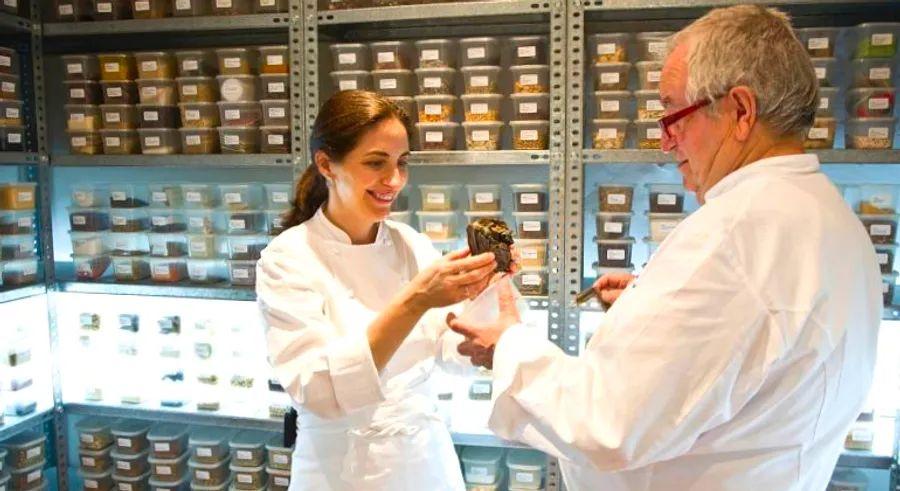Pintxos paradise: A fine dining destination in San Sebastian

San Sebastian is the embodiment of culinary excellence.
In 2014, three restaurants in the charming city of 200,000 on Spain's northeastern Atlantic coast earned the prestigious three Michelin stars. Only Kyoto, Japan, boasted more Michelin-starred restaurants in such a small area.
It’s easy to see why food enthusiasts often rank San Sebastian as a top destination on their culinary travel bucket list. And then, there are the pintxos.
Pintxos – or ‘spikes’ in the local Basque dialect – are a reimagined version of tapas, elevating the experience to an entirely new level.
No greasy chorizo or soggy calamari skewers here.
San Sebastian’s pintxos bars are culinary masterpieces in their own right, serving up dishes that could easily hold their own next to the Michelin-starred restaurants nearby. The only dilemma for visitors to this food haven is not what to eat, but where to eat it.
I opted for leisurely, extended lunches at fine restaurants, followed by a late-night adventure hopping from one pintxos bar to the next.
Foie gras ice cream
My culinary journey began with a memorable lunch at the renowned Arzak.
Here, 71-year-old Juan-Mari Arzak has maintained a Michelin star for 40 years and held three stars for a remarkable 25 years. Reaching the top in any field for a quarter of a century is extraordinary, but in the fiercely competitive world of fine dining, it’s truly unparalleled.
Arzak is not just a restaurant; it is the legacy of the Arzak family.
Juan-Mari’s grandparents first established the building as a wine cellar and tavern in 1897, while Juan-Mari himself began working there in 1966.
The modest exterior on a quiet suburban street opens into a sleek, modern dining room where the same menu is offered at both lunch and dinner. To call it simply a meal, however, doesn't quite capture the experience.
It’s an unforgettable culinary adventure filled with artistry, complexity, and even a touch of humor.
A fine dining laboratory.
Foie gras is transformed into ice cream, paired with caramelized onions and green tea, and served in an upside-down yucca cone dusted with shellfish powder.
A deceptively simple yet exquisite dish combines cubes of potato, egg yolk, and white truffle.
For an overwhelming sensory experience, grilled lobster with charcoal-roasted zucchini is presented on a transparent plate, accompanied by an iPad showing a video of waves crashing onto the shore.
Yes, seriously.
Arzak’s post-dessert petits fours feature a playful fusion of a candy shop and workshop, named Ferreteria Arzak, or Arzak Ironmongers. The treats include silver sugar keys, cola bottle caps, chocolate-coated nuts, and edible screws.
As expected from one of the world’s elite restaurants, the wine cellar boasts a collection of rare and prestigious vintages.
Behind the scenes, there’s a laboratory where new dishes are developed, alongside a room stocked with 1,500 different spices.
Could these be the most famous tortillas in the world?
The Arzak family has not only defined Michelin-starred dining in San Sebastian but also helped establish the city as a culinary landmark.
Today, San Sebastian's culinary reputation is equally rooted in its pintxos bars as it is in its Michelin stars. After recovering from an indulgent lunch, it's time to explore the evening options.
While it’s easy to get lost in the visual appeal of the pintxos bars, joining a small group tour offers a great introduction and gives you a chance to sample some of the finest dishes and spots.
Jon Warren, an Englishman who left behind his finance career, turned his passion into San Sebastian Food, a company offering tours through the city's pintxos bars, local markets, and the vineyards that contribute to the Basque region's culinary fame.
According to Warren, the pintxos bars are the vibrant, youthful counterparts to the Michelin-starred restaurants, providing unmatched flexibility: casual dining, small portions, affordable prices, and the ability to seamlessly shift from traditional to innovative cuisine.
An evening tour guided by a donostiarra (local San Sebastian resident) takes guests from one pintxos bar to another, with small bites and pours of local ciders and wines, particularly txakoli, a lightly sparkling white wine from the region.
A myriad of bars, ranging from the traditional to the avant-garde, compete to outshine each other with extravagant displays or unique specialties.
Bar Nestor is renowned for its tortilla, but it’s available only at 1 p.m. and 8 p.m. sharp. Arriving even 15 minutes late will leave you empty-handed.
The anchovies here are legendary.
At Goiz Barci, the rare and prized percebes (goose barnacles) are less predictable, but definitely worth waiting for. Meanwhile, the boquerones (fresh anchovies) at Txepetxa are nothing short of iconic.
Warren sums up pintxos culture perfectly when he says it’s all about the social experience.
The streets of the old town are alive with a vibrant energy, as bartenders, locals, and visitors mingle together, sharing wine, food, and conversation.
As if the culinary gods hadn’t already blessed San Sebastian with Michelin stars and pintxos bars, the city is also home to countless artisanal producers scattered throughout.
The central food market is a treasure trove of regional delights, with the star attraction being the renowned jamon iberico de bellota, made from acorn-fed pigs.
In the rare moments between indulgent meals, take a stroll along the stunning beaches or promenade, breathing in the fresh sea air and admiring the breathtaking views, as you daydream of becoming a local donostiarra.
Arzak, Avda. Alcalde Elósegui, 273, Donostia, San Sebastian, Spain; +34 943 278 465
San Sebastian Food, Hotel Maria Cristina, Republica Argentina Kalea, 4; +34 943 42 11 43
This article was first published in November 2014 and has since been updated.

1

2

3

4

5
Evaluation :
5/5